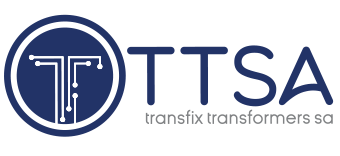Coal mining company Seriti Resources CEO Mike Teke has hit back at critics who have labelled his desire to invest in renewable energy while being a coal advocate as contradictory. Speaking at the Wits Mining Seminar, in Johannesburg, on September 28, Teke said he had received criticism for being “neither fish nor fowl”, with one foot in coal and the other in renewables.
Due to the sustained improved performance of generation availability as well as the anticipated lower demand over the weekend, loadshedding will be suspended between 05:00 and 16:00 on Saturday and Sunday, Eskom said on Friday. Stage 2 loadshedding will be implemented from 16:00 until 05:00 on both Saturday and Sunday. On Friday, meanwhile, Stage 3 loadshedding will still be in place from 16:00 until 05:00 on Saturday. Breakdowns are currently at 14 266MW of generating capacity while the capacity out of service for planned maintenance is 5 388MW, Eskom said. Over the past 24 hours, a generating unit each at Arnot, Duvha, Ingula and Vanderkloof power stations was taken offline for repairs. In the same period, meanwhile, a generating unit at Hendrina Power Station was returned to service.
The South African government has received additional pledges, worth nearly $3.5-billion, in support of its Just Energy Transition Investment Plan (JET IP), increasing the overall envelope of concessional debt and grant funding to R11.9-billion. The Presidency’s Rudi Dicks told the Presidential Climate Commission (PCC) that Denmark and the Netherlands had combined their pledges with those of the International Partners Group (IPG) of France, Germany, the UK, the US and the European Union, which committed $8.5-billion to the JET IP in 2021.
Workers at the Richards Bay Coal Terminal in South Africa rejected its latest wage offer and will continue to strike, according to the main labor union at the port. Members of the Association of Mineworkers and Construction Union lowered their demand to a one-year 7% basic salary increase and a housing allowance, said Bheki Sithole, the union’s regional secretary. RBCT, the biggest coal export facility on the continent, offered a minimum 6% annual increase for three years. Volumes shipped at RBCT have dropped to the lowest level in decades because state-owned ports and rail operator Transnet’s operations have been hobbled by sabotage, cable theft and aging equipment. The walkout by RBCT workers that began Sept. 17 isn’t affecting operations, Sithole said. RBCT didn’t comment. Glencore, Thungela Resources and Exxaro Resources are among companies that use the terminal to ship coal.
The initial export component of South Africa’s yet-to-be-approved Green Hydrogen Commercialisation Strategy is not premised on the trade of scarce renewable electrons – converted into molecules or other tradeable derivatives – to decarbonise the industries of developed economies in Europe and Asia, Presidential Climate Commission (PCC) commissioner Joanne Bates insists. Instead, such exports are designed to ensure that South Africa can “lock-in” the grants, concessional debt and contract-for-difference price subsidies that are currently being offered by countries such as Germany and Japan to stimulate the use of green hydrogen products in their hard-to-abate sectors of steel, cement, petrochemicals, shipping and aviation.
Eskom has finally started a national update for the 6.6-million prepaid electricity meters under its control before they all become non-operational late next year. The utility said that the update, which has been under way for a little over a month, has been a success so far. The update is necessary to avoid a date rollover issue that will stop all 70-million STS-compliant prepaid electricity meters in the world from vending electricity after 24 November 2024.
Given the increasing size and weight of wind turbine components, ‘crane-less technology’ is becoming more relevant in the wind energy sector and will likely be adopted more widely in South Africa in the coming years, says power plant operator 3Energy CEO Florian Kroeber. While the term crane-less is used in the wind energy industry, it is misleading because most systems still use equipment that comprises a crane, although this technology mitigates the need for large ground-operated cranes for maintenance purposes.
Offshore wind energy has significant potential to provide a consistent source of renewable energy and create jobs in South Africa. While there are challenges to overcome, such as grid upgrades and maintenance costs, the benefits of offshore wind make it a promising solution to the country’s energy needs, says energy consultant Harmattan Renewables director Chanda Nxumalo. She explains that the World Bank estimates that there are about 49 GW of potential for fixed offshore turbines and about 852 GW of potential for floating turbines. This translates to about 900 GW of potential energy capacity.
The twelfth edition of Windaba, hosted by the South African Wind Energy Association (SAWEA), will focus on the impact of wind energy, its role in the energy mix, and related industry and energy challenges. The event will be held from October 3 to 5 at the Cape Town International Convention Centre. “We’ve established a track record in South Africa and proven that the technology works. Now we will be focused on impact,” says SAWEA CEO Niveshen Govender, commenting on the theme of this year’s Windaba: Beyond the Turbines.
Temporary power generation supplier Aggreko, an official sponsor at this year’s Manufacturing Indaba being held at the Sandton Convention Centre, in October, states that climate change is a hot topic in today’s world – and for good reason. With the last decade reported as the warmest on record, climate change is beginning to affect the manufacturing industry “in a big way”.
INDUSTRY NEWS
WHERE TO FIND US
Address
9 Yellow Street
Botshabelo Industrial Area
Botshabelo, Free State
Call / Email Us
Tel: +27 (0) 61 956 6772
Email: info@transfix.co.za
